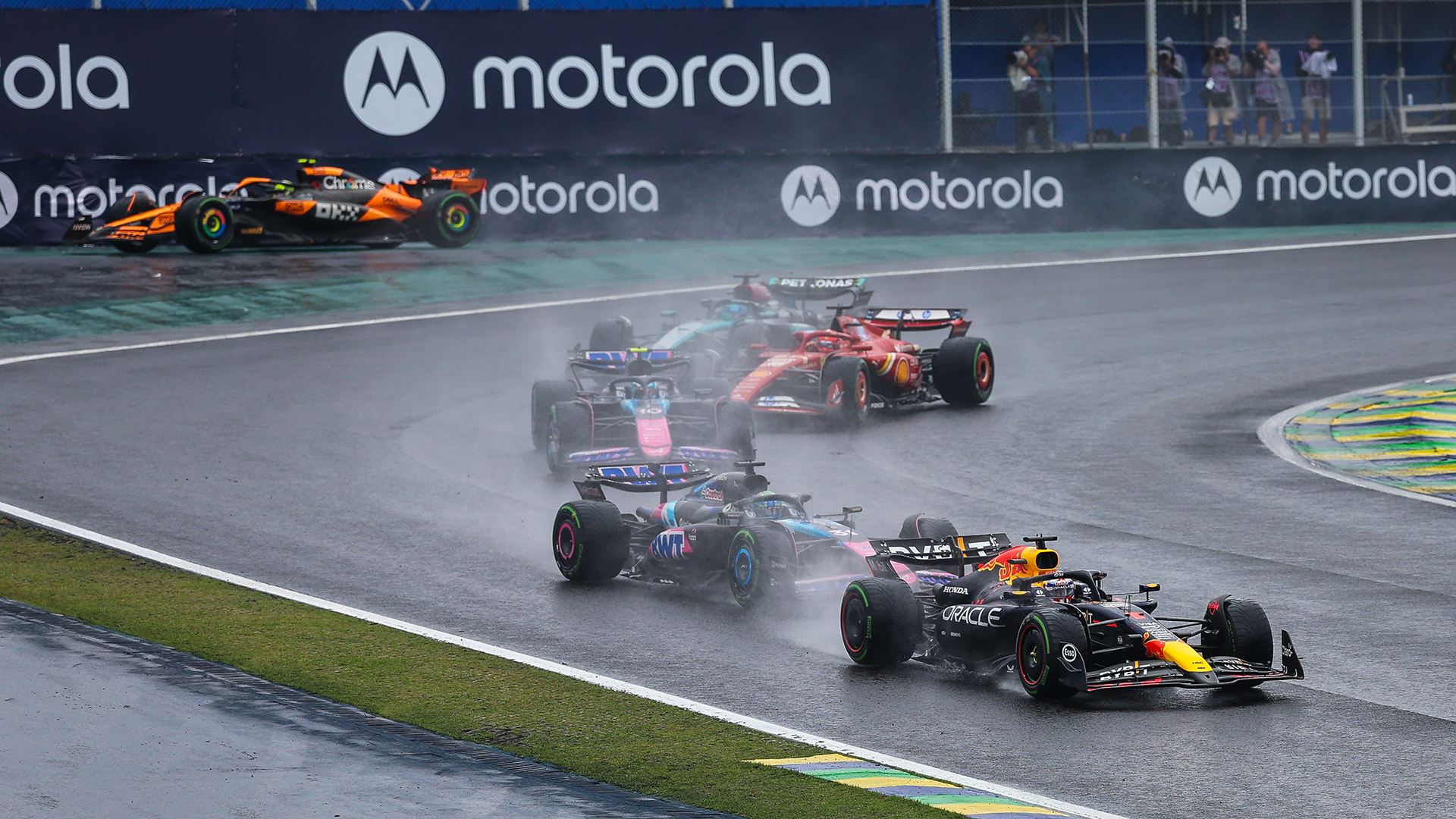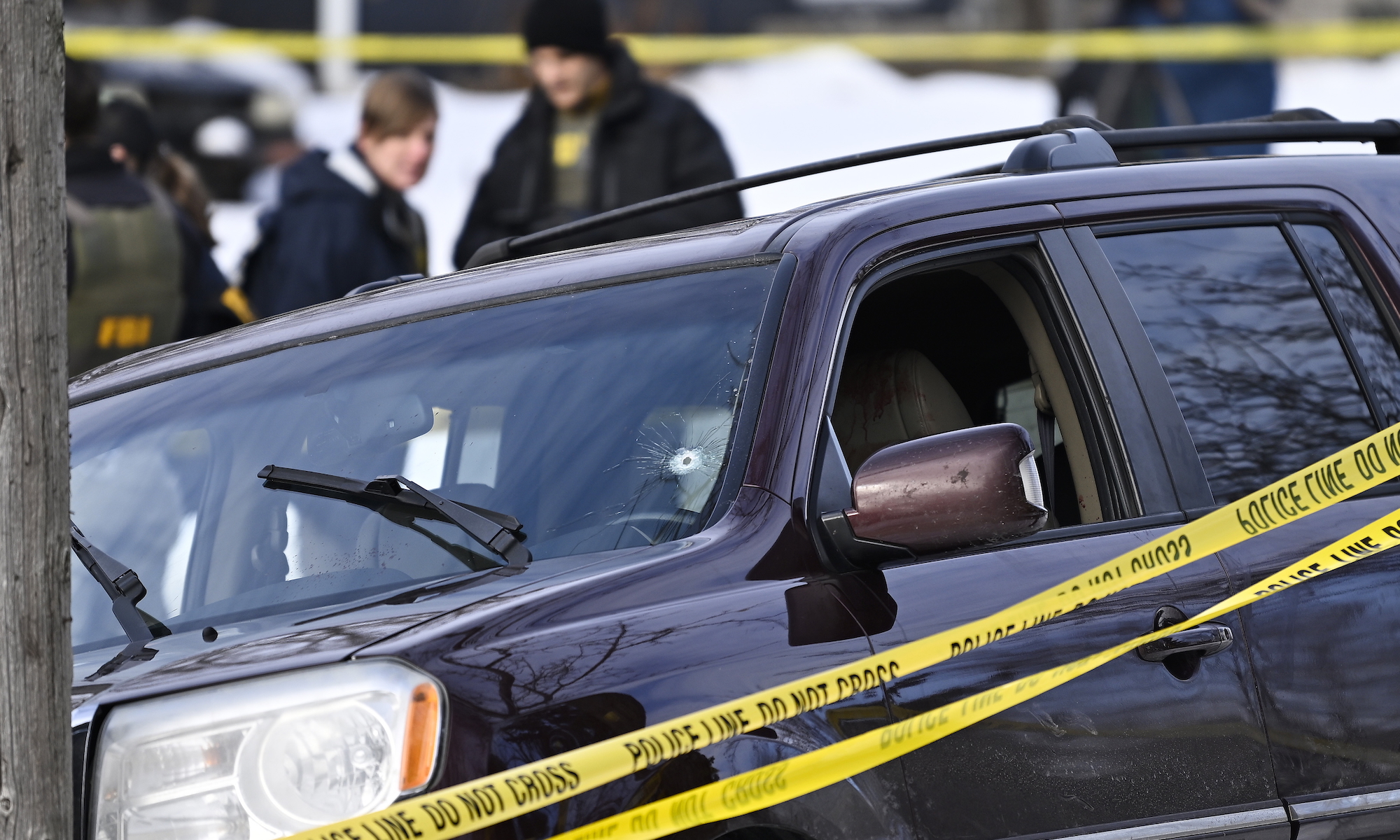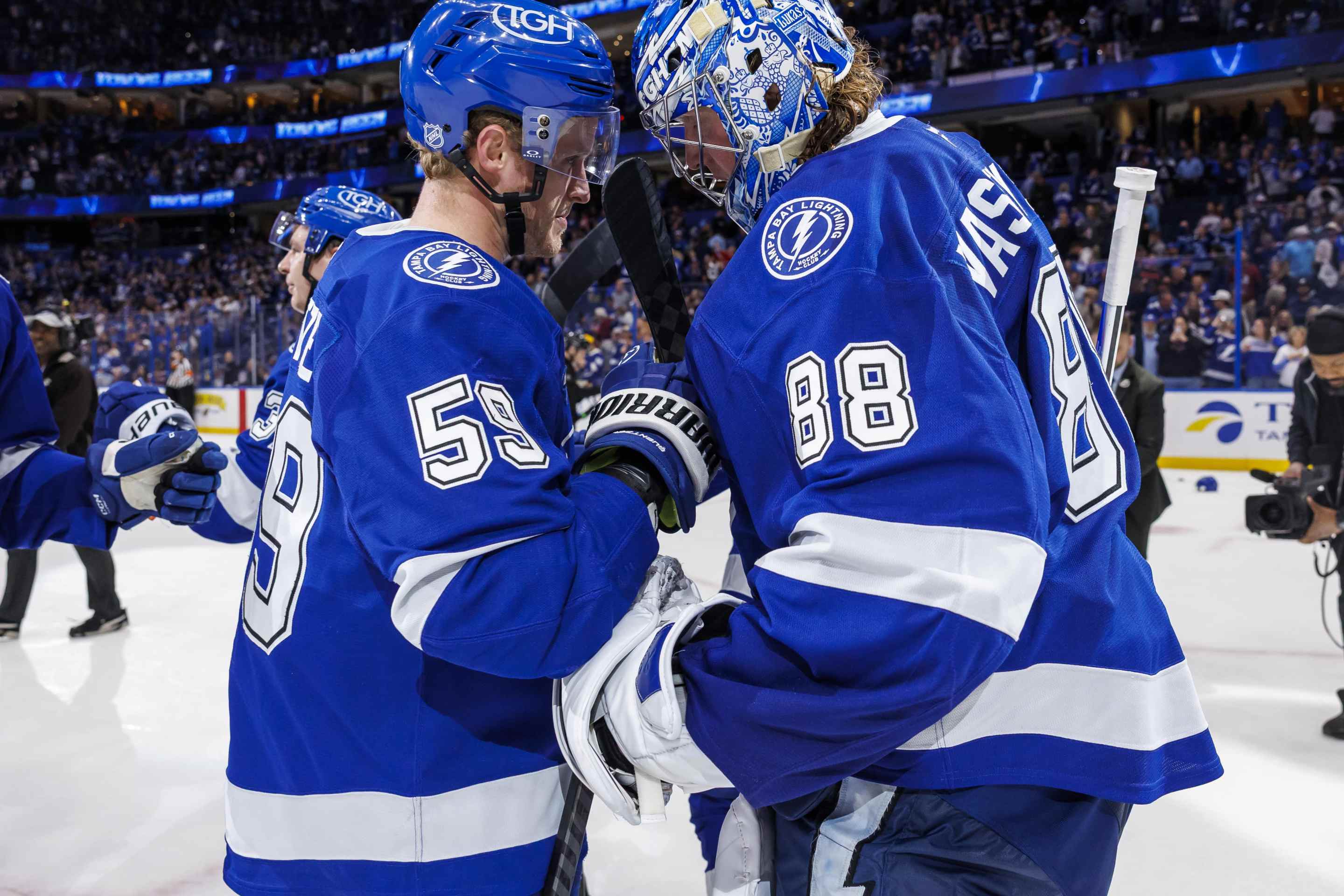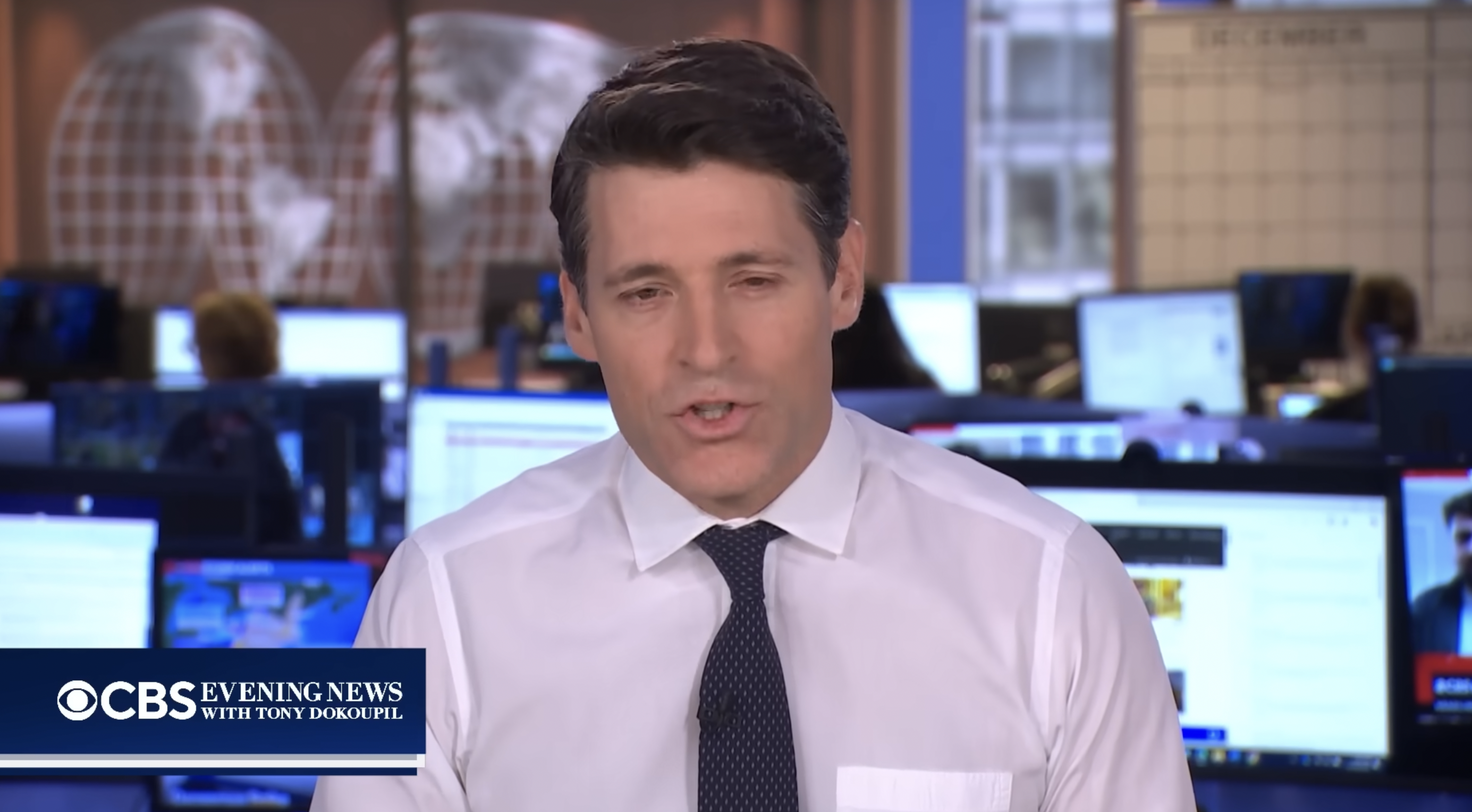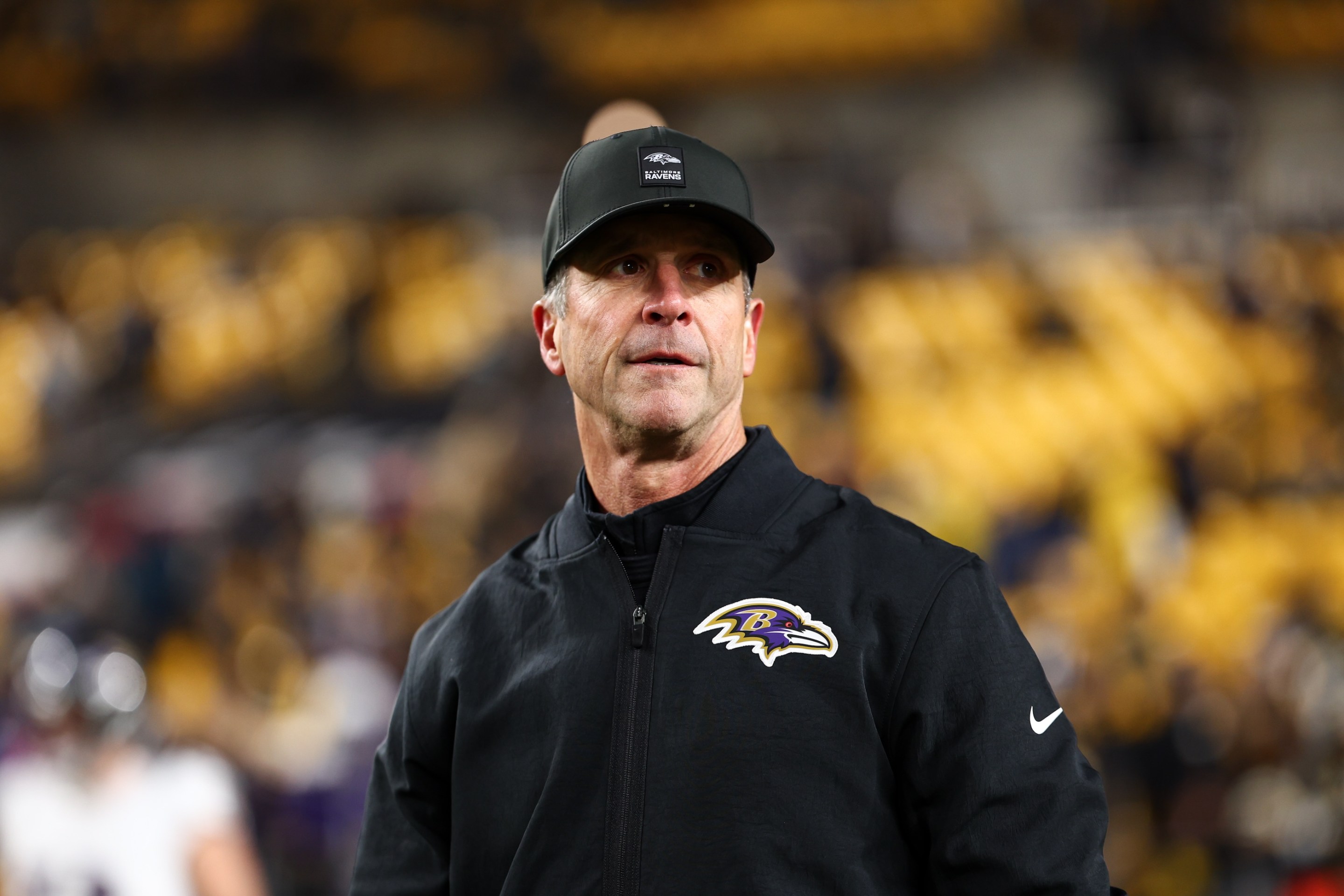For many reasons, the São Paulo Grand Prix is my favorite weekend of any in Formula 1. The track is the best, or at least my favorite, on the ever-more-bloated calendar, and its traditional position towards the end of the season makes it appointment viewing any time there is a semblance of a title race. Throw in the possibility for rain, given that the race almost always takes place in São Paulo's wet season, and the stage is often set for chaos, drama, and all-timer performances. The 2024 edition at the Autódromo de Interlagos might end up the most memorable weekend of all, if not for the pure quality on display, then for the sheer chaos that altered the schedule, upended the grid both before and during the race, and left the only man who could have won this race at the top of the podium, and within millimeters of another world title.
Let's start with that man, Max Verstappen. While last weekend in Mexico brought out some of Verstappen's worst impulses en route to a penalty-aided sixth-place finish that kicked Lando Norris' title charge and its corresponding narrative into overdrive, Sunday's race was Verstappen at his absolute best. That's not to say he had a great Sunday altogether; thanks to heavy rain on Saturday, qualifying was postponed to Sunday morning, under still wet conditions. Thanks to poorly timed red flag in the second part of qualifying, Verstappen was mired in 12th place for the start of the race, and a five-grid penalty, due to adding in a new internal combustion engine, pushed him further back to 17th. To make matters worse, Norris nabbed pole position, giving the McLaren driver hope of a not just a big points finish but also the possibility that Verstappen wouldn't get many points of his own, shrinking the drivers' championship gap further.
Verstappen had other ideas. After an awkward start—in which Lance Stroll beached his car on the formation lap, requiring a second formation lap—Verstappen quickly got to work. A brilliant start and first lap saw him jump up a whopping seven spots by turn one of lap two, already in the points and well in range of a podium finish. His climb up the grid didn't stop there; on lap 10, the championship leader passed Norris's McLaren teammate Oscar Piastri for seventh place, quickly followed by a pass of Liam Lawson for sixth on lap 11. Verstappen was then stuck behind Charles Leclerc for several laps, until lap 27, when things got very dumb very quickly.
Let me try to lay out the sequence of events here:
- On lap 27, Niko Hulkenberg spun out and beached his car, triggering a Virtual Safety Car.
- A bunch of drivers used the VSC, and the corresponding reduced pit stop time loss, to replace tires.
- Crucially, both first-place George Russell and second-place Norris went into the pits on lap 29, but the VSC ended while they were in pit lane, which meant everyone else could speed up, leaving those two coming out in fourth and fifth, respectively.
- While that was happening, Esteban Ocon (!) took the lead, with Verstappen behind him and Pierre Gasly in third. More on that trio in a moment.
- Once everyone got going again, it became clear that the rain was overwhelming, as cameras caught Russell and Norris shooting back waves of rain water while attempting to race.
- On lap 32, Franco Colapinto lost control of his Williams, smacking into the wall and earning a red flag, stopping the race and, crucially, allowing Ocon, Verstappen, and Gasly free tire changes. (Williams' mechanics were not having a good time on Sunday.)
That was a lot for five laps. The order after the race was restarted was Ocon, Verstappen, Gasly, Norris, and Russell. Norris would then run wide on lap 34, allowing Russell to pass him and further shrink Norris's already minuscule world championship hopes. Though Ollie Bearman, in a Haas this weekend in place of a sick Kevin Magnussen, spun his car out on lap 36, the next major incident came as Carlos Sainz lost control of his Ferrari and smacked into the barrier on lap 40, bringing out yet another safety car. This was the trigger for Verstappen's most impressive segment of the race, of the season, and maybe of his career.
Shortly after the safety car restart on lap 43, Norris went extremely wide once again, allowing Leclerc to pass him for fifth, while at the head of the pack, Verstappen completed his charge up the standings by easily passing Ocon on turn one. And, well, that was that. For the remaining 26 laps, it was Verstappen against the rain, against history, and certainly against no other drivers, as he put in lap after lap of incredible wet weather driving, widening the gap between himself, Ocon, and the rest of the field with each passing time around the circuit.
(A quick aside: I'd be remiss if I didn't praise the Alpine duo for their performance as well, with Ocon finishing second and Gasly in third. Though it was in part due to the VSC timing, Ocon and Gasly still managed the rain better than almost everyone else on the grid, and kept their cool to help Alpine leapfrog from ninth to sixth in the constructors' title standings, all in one race. Though the two French drivers have their issues, both with each other and with the general concept of "scoring points," they were able to put in the kind of performance that the team surely wanted and maybe expected when it put the two countrymen together ahead of the 2023 season. Their interview together after the race was adorable.)
By the end of the race, what had started as a potentially massive day for Norris and McLaren turned into a de facto coronation for Verstappen. He made sure of it by putting in nine of the ten fastest laps of the race, by anyone, in his final nine (Norris had the 10th fastest lap, and that was a whole second behind Verstappen's best), extending his lead to its eventual final count of 19.447 seconds over Ocon. Once he got clear of the pack, Verstappen managed the race perfectly, in conditions where one mistake could have cost him not just places but the race as a whole, and had the kind of performance that puts any doubts about his individual dominance to bed.
It had been a while in the making, as Verstappen hadn't won since the Canadian Grand Prix in June, but under the torrents and pressure of a São Paulo Grand Prix no one expected or, maybe, wanted, the soon-to-be four-time world champion showed why he's still the driver at the top of this particularly messy pyramid. Perhaps that's why Norris was a touch salty afterwards, saying that the other teams benefited from the VSC timing and the subsequent red flag, even going as far as saying "it's not talent, it's just luck."
As Hulkenberg, Leclerc, and Hamilton all pointed out in their respective interviews, though, it was talent that helped Verstappen do what he did on Sunday to all but clinch the world title. No one else on the grid could have successfully led a charge from so far back on the grid into a dominant win in apocalyptic looking conditions. Luck didn't play a part. Historically, it will also stand out, as Verstappen became just the sixth driver in F1 history to win a race from 17th or lower on the grid. So, even if the safety car/red flag shenanigans had worked out in Norris and Russell's favor, I have very little doubt that Verstappen would have still won. He was on a mission, and no amount of rain, regulations, crashes, and even more rain were going to stop him in São Paulo.
